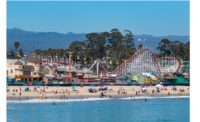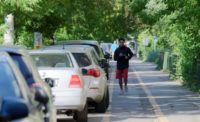Santa Cruz. Calif. police are poised to be the first in the nation to use a new statistical model to predict crime and try to prevent it.
Police recently submitted eight years of crime reports to an applied mathematics professor at Santa Clara University, and he is mapping the time, location and recurrence of crimes to help police predict crime and tailor their patrols. It's an emerging, national movement called "predictive policing."
"I think the more you put police in areas where there is more crime, the more efficiently you're policing the city," said George Mohler, the Santa Clara University professor doing the research.
Mohler said the goal is not to arrest more people, but rather to have an officer patrolling a neighborhood so that a car burglary, for example, doesn't happen in the first place.
Friend and Santa Cruz police leaders met with Mohler and gave him data from 2002 to 2009 - as well as the city's 2010 data this week. The data focused on property crimes, including the time, date and location of home burglaries, vehicle burglaries and stolen vehicles. "The overall model is based on the belief that crime is not random. So with enough data points, you could predict where and when it will happen," Friend said.
If a person sees a laptop computer in a parked car, for example, and a police officer is driving by at the same time, the thief backs off. The crime is prevented, the person is not arrested and the police are more efficient on patrol.
Mohler expects to return his results to Santa Cruz police in the coming months, and police will decide how to change patrol locations and times within officers' usual shifts.



